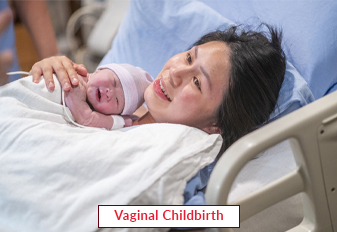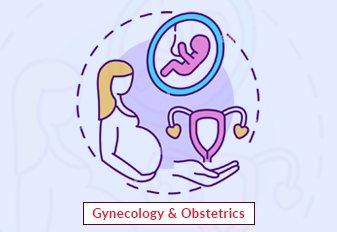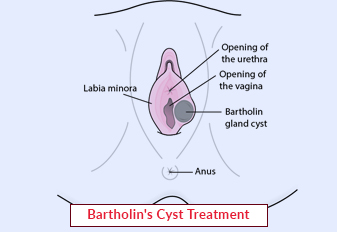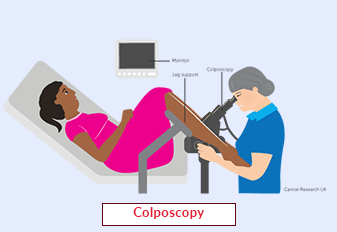Vaginal Childbirth

What is Vaginal Childbirth?
Introduction
Vaginal childbirth is the natural process through which a baby is born via the birth canal. It is a remarkable and transformative experience that brings together the efforts of the mother's body and the baby's movements to facilitate a safe and successful delivery. This article provides an overview of vaginal childbirth, including its stages, preparation, procedure, and important considerations.
Understanding Vaginal Childbirth
Vaginal childbirth involves the following key elements:
-
Birth Canal: The birth canal consists of the vagina and the lower part of the uterus (cervix). It is a flexible and elastic passage through which the baby passes during delivery.
-
Contractions: The uterus contracts rhythmically during labor to help push the baby through the birth canal.
-
Baby's Position: The baby moves through the birth canal in various positions, such as head-down (cephalic presentation), breech position, or other less common positions.
About Vaginal Childbirth
Stages of Vaginal Childbirth
Vaginal childbirth can be divided into three stages:
-
Stage 1: Early Labor: This stage begins with the onset of labor and includes the early dilation and effacement of the cervix. Contractions become regular and gradually increase in intensity.
-
Stage 2: Active Labor: During this stage, the cervix continues to dilate, and the baby moves through the birth canal. Contractions become more intense and frequent, and the urge to push arises.
-
Stage 3: Delivery of the Placenta: After the baby is born, the placenta (afterbirth) is delivered. The uterus continues to contract to expel the placenta.
Signs and Preparation for Vaginal Childbirth
Signs that labor is approaching may include:
-
Regular and progressively stronger contractions
-
Rupture of the amniotic sac (water breaking)
-
Bloody show (mucus with streaks of blood)
To prepare for vaginal childbirth, it is important to:
-
Attend prenatal care appointments: Regular prenatal visits with a healthcare provider ensure that both the mother and the baby are healthy and that any potential issues are addressed.
-
Create a birth plan: A birth plan outlines preferences for pain relief, labor positions, and other aspects of childbirth. Discussing the plan with a healthcare provider helps ensure that expectations align with the birth setting and provider's practices.
-
Pack a hospital bag: Prepare a bag with essentials for the hospital stay, including comfortable clothing, toiletries, and items for the baby.
Procedure of Vaginal Childbirth
The Procedure of Vaginal Childbirth
The procedure of vaginal childbirth can vary for each individual, but it generally involves the following steps:
-
Onset of labor: Labor begins with regular contractions that help the cervix dilate and efface.
-
Active labor: As the cervix continues to dilate, the mother experiences strong and frequent contractions. The healthcare provider monitors progress and provides support and guidance.
-
Pushing: During this stage, the mother actively pushes with each contraction to help the baby move through the birth canal.
-
Birth of the baby: As the baby's head emerges, the healthcare provider supports the baby's body and guides the shoulders and remainder of the body out of the birth canal.
-
Delivery of the placenta: After the baby is born, the uterus continues to contract, leading to the delivery of the placenta.
Pain Relief Options during Vaginal Childbirth
There are various pain relief options available during vaginal childbirth, including:
-
Breathing and relaxation techniques: Deep breathing, focused relaxation, and visualization can help manage pain and promote a sense of calm.
-
Supportive positions: Changing positions, such as walking, squatting, or using a birthing ball, can help manage discomfort and facilitate the progression of labor.
-
Medications: Analgesics and epidural anesthesia may be offered to provide pain relief. These options can be discussed with a healthcare provider.
Potential Risks and Complications
While vaginal childbirth is a natural process, there are potential risks and complications that can arise. These may include:
-
Perineal tears: Tears or lacerations in the perineum, the area between the vagina and anus, can occur during childbirth. These may require stitches.
-
Postpartum hemorrhage: Excessive bleeding after childbirth can occur and may require medical intervention.
-
Infection: Infections can develop in the mother or baby during or after childbirth.
-
Fetal distress: In some cases, the baby may experience distress during labor, requiring medical intervention.
It is important to discuss these risks with a healthcare provider and be aware of any signs or symptoms that may require immediate attention.
Aftercare and Recovery
After vaginal childbirth, the mother will require postpartum care and support. This may involve:
-
Monitoring for postpartum bleeding and healing of any tears or incisions.
-
Breastfeeding support and guidance.
-
Emotional support and guidance on postpartum adjustments and self-care.
-
Follow-up appointments with a healthcare provider to ensure the well-being of both the mother and the baby.
Frequently Asked Questions (FAQs)
FAQ 1: How long does vaginal childbirth typically take?
The duration of vaginal childbirth can vary significantly from woman to woman. It depends on factors such as the mother's overall health, previous childbirth experiences, and the progression of labor. On average, vaginal childbirth can last between 8 to 18 hours, but it can be shorter or longer.
FAQ 2: Can I have a vaginal childbirth after a cesarean section (C-section)?
In some cases, vaginal birth after cesarean (VBAC) may be possible. However, the decision depends on individual circumstances, including the reason for the previous C-section and the risks involved. It is important to consult with a healthcare provider to determine if VBAC is an option.
Conclusion
Vaginal childbirth is a natural process that allows for the safe delivery of a baby through the birth canal. It involves the stages of labor, active participation from the mother, and the guidance of healthcare providers. By understanding the procedure, preparing adequately, and seeking appropriate support, women can navigate vaginal childbirth with confidence. Each childbirth experience is unique, and it is important to work closely with healthcare providers to ensure the best possible outcome for both the mother and the baby.
FAQ 1
FAQ 1: How long does vaginal childbirth typically take?
The duration of vaginal childbirth can vary significantly from woman to woman. It depends on factors such as the mother's overall health, previous childbirth experiences, and the progression of labor. On average, vaginal childbirth can last between 8 to 18 hours, but it can be shorter or longer.
FAQ 2
FAQ 2: Can I have a vaginal childbirth after a cesarean section (C-section)?
In some cases, vaginal birth after cesarean (VBAC) may be possible. However, the decision depends on individual circumstances, including the reason for the previous C-section and the risks involved. It is important to consult with a healthcare provider to determine if VBAC is an option.
Require Assistance?
Get A Quick Callback From Our Healthcare Experts






